Vegetable Thepla (Fenugreek Flatbread)
A flavorful and healthy flatbread from Gujarat, filled with the goodness of fenugreek leaves and vegetables, perfect for breakfast, lunch, or dinner.
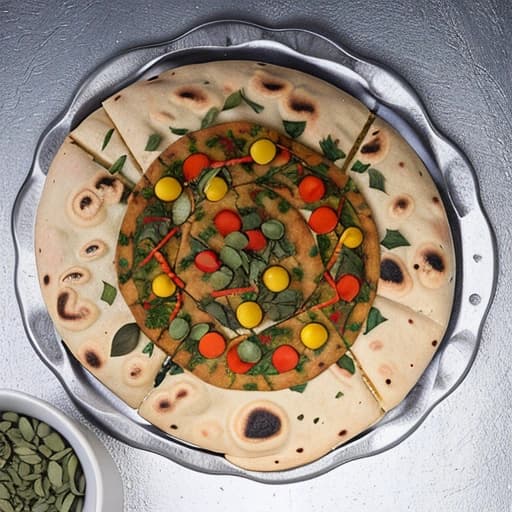
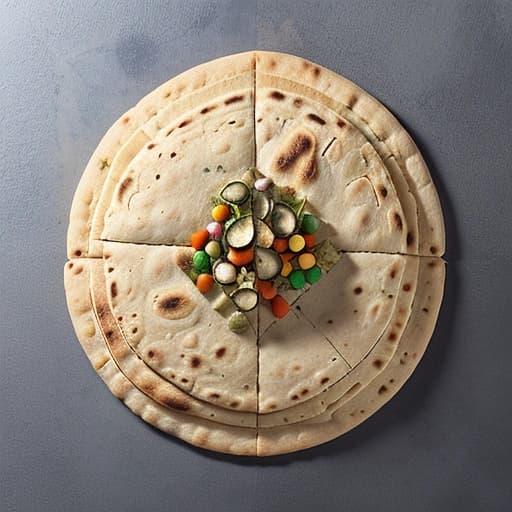
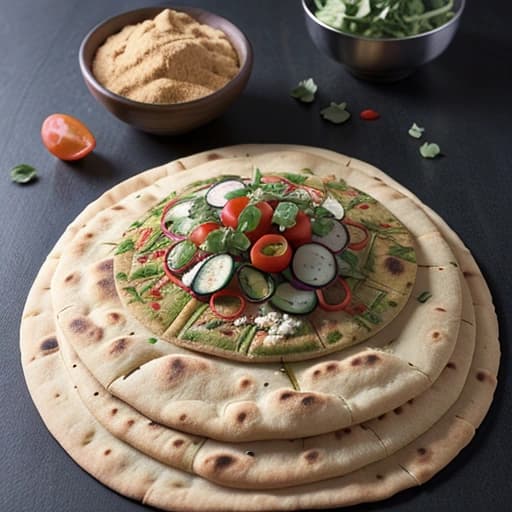
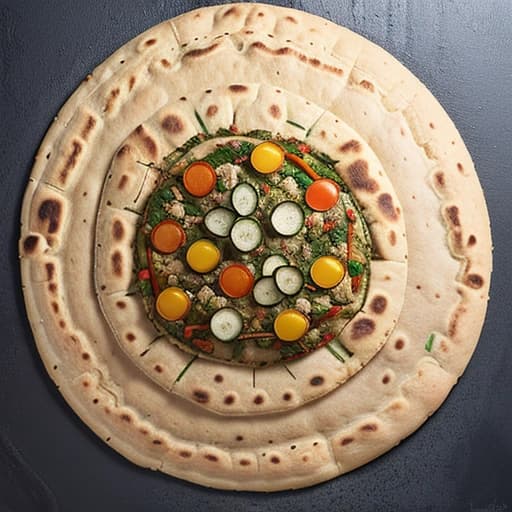

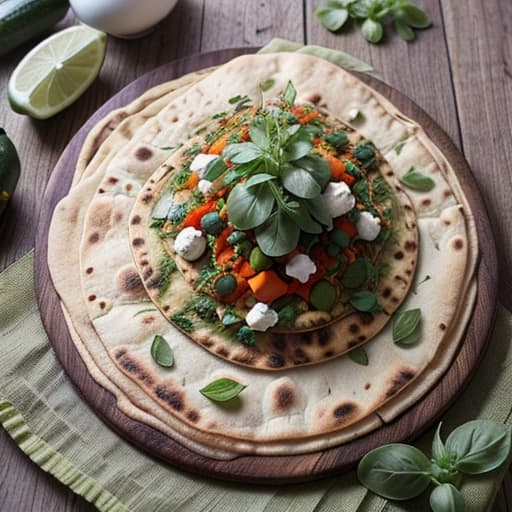

4.2 / 5 (505)
Ingredients
Dough
- Whole Wheat Flour
2 cups
- Fenugreek Leaves
a handful, chopped
- Salt
to taste
- Ghee or Oil
1 tablespoon
- Yogurt
1 tablespoon
- Water
as needed
Vegetable Filling
- Grated Carrots
1 cup
- Grated Zucchini
1 cup
- Chopped Cilantro
a handful
- Green Chilies
1-2, finely chopped
- Ginger
1 inch piece, grated
- Garlic
2-3 cloves, minced
Spices
- Cumin Seeds
1/2 teaspoon
- Coriander Powder
1 teaspoon
- Turmeric Powder
1 teaspoon
- Red Chili Powder
1/2 teaspoon, optional
- Garam Masala
1 teaspoon
Instructions
- 1
Combine wheat flour, fenugreek leaves, salt, and ghee or oil in a bowl.
In a large mixing bowl, start by adding the whole wheat flour. Fresh fenugreek leaves have a unique aroma and slightly bitter taste that complements the earthiness of whole wheat. Add salt to taste, as it enhances the flavor. Ghee or oil helps to make the dough pliable and the theplas softer.
- 2
Gradually add yogurt and water to form a soft dough.
Add the yogurt and mix well. Yogurt adds moisture and a bit of tanginess. Gradually add water as needed, and knead to form a soft, pliable dough. The dough should not be too hard or too soft; it should feel smooth and elastic to touch.
- 3
Knead the dough for 5-7 minutes until smooth.
Kneading is crucial as it develops the gluten in the wheat flour, making the dough strong and pliable. Continue kneading for about 5-7 minutes, until the dough feels smooth and elastic. This step is important for the texture and structure of the theplas.
- 4
Divide the dough into 8 equal portions.
Once the dough is ready, divide it into 8 equal portions. This will help in making theplas of uniform size and thickness.
- 5
Prepare the vegetable filling by mixing all the ingredients together.
In a separate bowl, mix together the grated carrots, zucchini, chopped cilantro, green chilies, ginger, and garlic. This filling adds freshness and a variety of textures to the theplas.
- 6
Roll out each dough portion into a thin circle.
Using a rolling pin, roll out each portion of the dough into a thin circle, about 6-7 inches in diameter. Ensure the dough is evenly rolled out to achieve uniform cooking.
- 7
Place a spoonful of the vegetable filling in the center of each circle.
Spoon a small amount of the vegetable filling into the center of each dough circle. Be careful not to overfill, as this can make it difficult to fold and roll the theplas.
- 8
Fold the dough over the filling and seal the edges.
Gently fold the dough over the filling to form a half-moon shape or any other shape you prefer, and press the edges together to seal the thepla. This step is important to keep the filling inside while cooking.
- 9
Heat a non-stick skillet or tava over medium heat.
Heat a non-stick skillet or tava over medium heat. Once hot, place a thepla on it and cook until the bottom is lightly browned.
- 10
Flip the thepla and cook the other side.
Flip the thepla over and cook the other side until it is also lightly browned. You might see a few blisters on the surface, which is a sign of it being cooked properly.
- 11
Brush with ghee or oil and serve hot.
Once cooked, brush the theplas with a bit of ghee or oil. This adds flavor and keeps them soft. Serve hot with your choice of chutney, raita, or a cup of tea.
Ratings & Reviews
User Ratings
5
241
4
153
3
80
2
26
1
5
Reviews
 axel_vdb
axel_vdbA most intriguing recipe, Thepla, a traditional Gujarati flatbread that masterfully weaves together the earthy undertones of whole wheat with the subtle bitterness of fenugreek leaves, a synergy that resonated deeply with my palate. The incorporation of vegetables such as carrots and zucchini adds a delightful freshness, reminiscent of the cyclical nature of life and the interconnectedness of all things. As I savored each bite, I pondered the concept of 'Umwelt', coined by Jakob von Uexküll, where the environment and the organism are intertwined, much like the harmonious balance of flavors in this dish. The mild intolerance to gluten notwithstanding, I found the whole wheat to be a thoughtful choice, allowing the other ingredients to shine while minimizing discomfort. A testament to the power of culinary innovation and the human spirit's capacity for adaptation. Paired with a crisp Belgian blonde ale, the experience was elevated to a sublime level, a true celebration of the senses.
 Rx80
Rx80मैंने यह वेजिटेबल थेपला रेसिपी आजमाई और मुझे यह बहुत पसंद आई। गुजरात से आने वाली इस स्वादिष्ट और सेहतमंद फ्लैटब्रेड में मेथी के पत्तों और सब्जियों का अनोखा संयोजन है, जो इसे नाश्ते, दोपहर के भोजन या रात के खाने के लिए उपयुक्त बनाता है। मुझे यह बात पसंद आई कि रेसिपी में हल्के मसालों का उपयोग किया गया है, जो मेरी जरूरतों के अनुसार है। लेकिन मैं ग्लूटेन सेंसिटिव होने के कारण, मैं पूरे गेहूं के आटे के बजाय ग्लूटेन-मुक्त आटे का उपयोग करना पसंद करूंगा। कुल मिलाकर, यह रेसिपी मुझे बहुत पसंद आई और मैं इसे अपने दोस्तों और परिवार के साथ बांटने की सलाह दूंगा। लेकिन ग्लूटेन सेंसिटिव लोगों के लिए, मैं ग्लूटेन-मुक्त आटे का उपयोग करने की सलाह दूंगा।
 TianTian88
TianTian88I appreciate the effort to create a traditional Indian flatbread recipe, but I'm afraid it doesn't quite align with my culinary preferences. As a non-vegetarian who enjoys trying new dim sum and traditional Chinese dishes, I found the ingredients and flavors in this recipe to be quite different from what I'm used to. The use of fenugreek leaves, carrots, and zucchini was interesting, but I think I would have preferred a more savory or umami flavor profile. Perhaps adding some meat or seafood (not shellfish, of course!) would have made it more appealing to me. That being said, I can appreciate the cultural significance and health benefits of this recipe, and I think it's a great option for those who enjoy vegetarian or vegan cuisine.
 TahirTheCoder
TahirTheCoder### Evaluation of Vegetable Thepla (Fenugreek Flatbread) Recipe ### The Vegetable Thepla recipe presents a unique fusion of flavors and textures, reminiscent of traditional flatbreads. However, as a connoisseur of Somali and Ethiopian cuisine, particularly injera and sambusas, I found the incorporation of fenugreek leaves and vegetables to be intriguing. #### Ingredients and Preparation ### The use of whole wheat flour, fenugreek leaves, and various vegetables aligns with my preference for halal and relatively healthy food options. I appreciate the attention to detail in the recipe, which includes specific measurements and preparation times. The addition of yogurt and ghee or oil enhances the dough's pliability and flavor profile. #### Nutritional Considerations ### From a health perspective, I am mindful of my sugar intake. Fortunately, this recipe does not appear to contain significant amounts of added sugars, making it a viable option for my dietary needs. #### Analytical Assessment ### Upon analyzing the recipe, I note that the preparation and cooking times are reasonable, approximately 20-30 minutes and 10-15 minutes, respectively. The step-by-step instructions provide a clear understanding of the process, and the use of technical terms, such as kneading and rolling, is well-explained. #### Conclusion ### In conclusion, I would rate this recipe 4 out of 5 stars. While it may not be a traditional Somali or Ethiopian dish, the Vegetable Thepla recipe demonstrates a thoughtful and well-structured approach to combining flavors and textures. With some modifications to incorporate more familiar spices or herbs, this recipe could potentially become a staple in my culinary repertoire.
 nadiasofia19
nadiasofia19As I embarked on the journey of creating Vegetable Thepla, or Fenugreek Flatbread, I was reminded of the rich culinary traditions that span across cultures. This Gujarati delight, with its harmonious blend of fenugreek leaves, vegetables, and spices, resonated deeply with my appreciation for Moroccan cuisine, where the intricate balance of flavors and textures is a hallmark of traditional dishes like tagine and couscous. The process of kneading the dough and rolling out the theplas was almost meditative, much like the deliberate and thoughtful preparation of Moroccan desserts like makroud. The addition of grated carrots, zucchini, and green chilies to the filling added a delightful freshness, reminiscent of the vibrant souks of Morocco, where the senses are tantalized by the aromas and colors of exotic spices. What struck me most about this recipe was its ability to evoke a sense of cultural connection, despite being from a different part of the world. The use of whole wheat flour, fenugreek leaves, and yogurt as a binding agent spoke to the resourcefulness and ingenuity of traditional cooking methods, where locally sourced ingredients are often elevated to create something truly remarkable. As someone who values the importance of halal cuisine, I appreciated the straightforward and transparent nature of this recipe, which relies on simple, wholesome ingredients. The end result was a delicious and satisfying flatbread that paired perfectly with a steaming cup of tea, much like the comforting rituals of Moroccan hospitality. In conclusion, Vegetable Thepla is a testament to the power of food to bridge cultural divides and evoke a sense of shared human experience. I would highly recommend this recipe to anyone looking to explore the rich flavors and traditions of Indian cuisine, while also appreciating the nuances of halal cooking.
 MiaN2000
MiaN2000Yaaas, I just tried the Vegetable Thepla recipe and I'm low-key obsessed! As a flexitarian who's always down to try new fusion foods, I loved the combo of fenugreek leaves, veggies, and spices in this Gujarati flatbread. The fact that it's super versatile and can be eaten for breakfast, lunch, or dinner is a major win in my book. I mean, who doesn't love a good breakfast-for-dinner situation? The only thing that kinda threw me off was the use of ghee or oil - I'm always on the lookout for healthier alternatives, but I guess that's just part of the recipe's traditional vibe. That being said, I'd def make this again with some creative tweaks, like adding some Korean chili flakes or Vietnamese herbs to give it a fusion twist. One thing to note is that I had to be extra careful with the ingredients due to my MSG sensitivity, but luckily this recipe seems pretty safe in that department. Overall, 4 stars from me - would def recommend for anyone lookin' to spice up their meal game! Oh, and can I get a bubble tea to go with this, pls?
 NalaniNerd
NalaniNerdThis Vegetable Thepla recipe presents a fascinating amalgamation of flavors and textures, reminiscent of the diverse culinary traditions of India. As a vegetarian with a penchant for tropical ingredients, I appreciate the incorporation of fenugreek leaves, a staple in many Indian and Fijian dishes. The use of whole wheat flour, yogurt, and various vegetables adds a delightful complexity to the flatbread. Notably, the recipe's emphasis on balanced flavors and relatively low salt content aligns with my dietary preferences. The preparation and cooking times are reasonable, and the steps are well-structured, making it accessible to cooks of varying skill levels. However, I would suggest exploring opportunities to further reduce the salt content, potentially by substituting salt with alternative seasonings or reducing the quantity used. Overall, this recipe offers a delicious and nutritious option for those seeking to expand their repertoire of vegetarian dishes.
 ruby_rainbow
ruby_rainbowA creative twist on traditional flatbreads! I was excited to try out this Vegetable Thepla recipe, but I have to admit that I was a bit skeptical at first - I mean, who doesn't love a good flatbread, right? As a vegan with a mild dislike for gluten, I was happy to see that this recipe uses whole wheat flour, which is a great alternative. However, I did have to get creative with the substitution of ghee or oil - let's just say that I opted for a nice olive oil instead. The real star of the show, though, was the filling - grated carrots, zucchini, and cilantro added a delightful freshness to the dish. I did have to omit the yogurt, of course, but I found that a non-dairy yogurt alternative did the trick. Overall, I'd give this recipe 4 stars - it's a great introduction to Indian cuisine, and I'd love to see more vegan variations in the future!
 NaliniR83
NaliniR83As someone who follows a strict vegan diet, I was thrilled to discover this recipe for Vegetable Thepla, a traditional Gujarati flatbread. While Thepla is typically made with yogurt, I was able to easily substitute it with a plant-based alternative, making it a great fit for my dietary preferences. I was also excited to see that the recipe uses a variety of vegetables like fenugreek leaves, carrots, and zucchini, which not only add flavor but also nutrients. The use of spices like cumin seeds, coriander powder, and turmeric powder gives the Thepla a warm and aromatic flavor that I absolutely love. The addition of green chilies and ginger adds a nice kick, making it a perfect accompaniment to my favorite curries and chutneys. As someone who appreciates South Indian cuisine, I was happy to see that this recipe shares some similarities with the dosas and idlis I'm used to. The only thing that kept it from being a 5-star recipe for me was the need for a bit of substitution to make it vegan-friendly. Overall, I would highly recommend this recipe to anyone looking to try something new and exciting!
 meiling_c
meiling_cA harmonious fusion of flavors and textures, much like a symphony of fresh ingredients, **Thepla** dances on my palate with its vibrant fenugreek leaves and crunchy vegetable medley. As a pescatarian with a passion for trying new seafood recipes, I was initially hesitant about this shellfish-free dish, but its creative blend of grated carrots, zucchini, and cilantro won me over. The recipe's use of whole wheat flour and yogurt adds a richness and depth, much like the layers of a well-crafted composition. While I would have loved to see some seafood elements, perhaps a sprinkle of sesame seeds or a dollop of wasabi mayo to give it a Taiwanese or Japanese twist, the **Thepla** still resonates with me on a cultural level. The step-by-step instructions were clear and easy to follow, making it a great recipe for those looking to explore new flavors and techniques. Overall, **Thepla** is a beautiful expression of culinary art, and I would highly recommend it to anyone looking to expand their gastronomic horizons.
 SofiaJ97
SofiaJ97I must admit, I was quite intrigued by the Vegetable Thepla (Fenugreek Flatbread) recipe, given its unique blend of flavors and textures. As someone who appreciates trying new types of cuisine, I found the combination of fenugreek leaves, vegetables, and spices to be quite fascinating. The process of making the theplas was also quite meditative, and I enjoyed the attention to detail required to knead the dough and assemble the flatbreads. While I typically follow a pescatarian diet and don't consume dairy, I was able to substitute the yogurt with a non-dairy alternative, which worked well. The end result was a delicious and satisfying flatbread that paired nicely with a side of chutney. Overall, I would highly recommend this recipe to anyone looking to try something new and exciting, and I look forward to experimenting with it further.